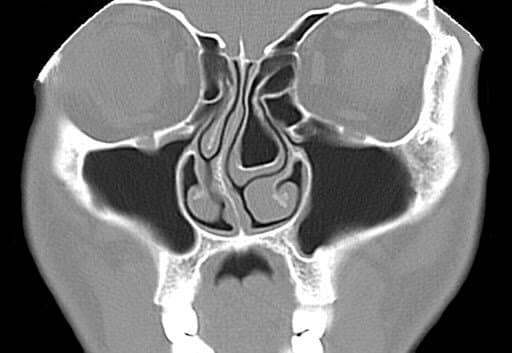Viral vs Bacterial Sinus Infections: Key Differences
Sinus infections can leave you feeling tired, congested, and downright miserable. But did you know that most sinus infections are caused by viruses, not bacteria? Understanding the difference between a viral vs bacterial sinus infection is essential for receiving the right treatment—and for avoiding unnecessary antibiotics that won’t help and could even cause harm. In this article, we’ll break down the main differences between these two types of sinus infections, including their symptoms, duration, diagnosis, and treatment options, so you know what to expect and when to see a healthcare provider.
Understanding Sinus Infections: Viral vs Bacterial
Sinus infections, medically termed sinusitis, refer to inflammation of the tissue lining the sinuses—the hollow spaces behind your cheeks, forehead, and eyes. These infections are extremely common, especially during cold and allergy seasons, with millions experiencing sinus infections worldwide each year.
However, not all sinus infections are the same. The two main types—viral and bacterial—often appear similar at first but have important differences that affect management and recovery. For example, misusing antibiotics to treat viral sinus infections contributes to antibiotic resistance and unnecessary side effects without speeding recovery.
By understanding whether you have a viral or bacterial sinus infection, you can better navigate treatment decisions and avoid common pitfalls. In this article, we’ll cover:
- Causes of each type of sinus infection
- How symptoms and duration differ
- How healthcare providers diagnose each type
- Common treatments for viral and bacterial sinus infections
- Answers to frequently asked questions about sinus infections
What Are Viral Sinus Infections?
Causes and Common Viruses
Most sinus infections begin as viral infections—the same viruses that cause the common cold. These include rhinoviruses, influenza (flu) viruses, and, more recently, COVID-19, which has been noted to cause upper respiratory symptoms that can mimic sinus infection. These viruses trigger inflammation in the sinus lining, leading to congestion and discomfort.
Imagine your sinuses as a network of tunnels: when a virus invades, it causes swelling in the tunnel walls, leading to blockage and pressure buildup that results in typical sinusitis symptoms.
Typical Symptoms of Viral Sinus Infection
Symptoms often include:
- Nasal congestion or stuffy nose
- Runny nose, with mucus typically clear or slightly cloudy
- Mild facial pain or pressure, particularly over the cheeks and forehead
- Fatigue that may increase the desire to rest
- Sore throat or persistent cough
Fever, bad breath (halitosis), and yellow or green mucus can occur with viral infections, but these symptoms alone do not necessarily indicate a bacterial infection. This overlap can make it tricky to identify the cause of your sinus infection based solely on symptoms.
Duration and Natural Course
A hallmark of viral sinus infections is their self-limiting nature. Symptoms typically peak within a few days and begin improving within 5 to 7 days as your immune system clears the virus. Most people feel significantly better after about a week without needing specialized medical treatment.
This is why it’s often recommended to allow your body time to heal before seeking antibiotics or other interventions unless symptoms worsen or persist.
How Viral Sinus Infections Are Diagnosed
Healthcare providers usually diagnose viral sinus infections based on symptom history and duration. In most cases, no special tests such as imaging or lab work are necessary. Providers assess your overall condition, ruling out signs that suggest a bacterial infection or complications.
As Dr. Emily Harper, an infectious disease specialist, notes, “The timing and progression of symptoms often tell us more than any test when it comes to viral sinus infections.”
What Are Bacterial Sinus Infections?
Causes and Common Bacteria Involved
Bacterial sinus infections are less common than viral ones but tend to be more persistent and severe. They often develop when the sinuses become clogged or inflamed after a viral infection hasn’t fully resolved, providing an opportunity for bacteria to multiply.
The most common bacteria responsible include:
- Streptococcus pneumoniae
- Haemophilus influenzae
These bacteria take advantage of inflamed tissues, causing a more intense infection.
Symptoms That May Suggest a Bacterial Infection
Bacterial sinus infection symptoms overlap with viral ones but typically include additional or prolonged features such as:
- Symptoms lasting longer than 7 to 10 days without improvement
- Symptoms worsening after an initial period of getting better (called “double worsening”)
- Thick green or yellow nasal discharge, which may feel more purulent or sticky
- Persistent or high fever above 101°F (38.3°C)
- Headache and significant facial pain or pressure around sinuses
- Foul-smelling breath (halitosis)
It’s important to remember that the color of mucus alone is not a reliable indicator of a bacterial infection. Studies show that coloring of mucus alone is not a dependable way to differentiate viral from bacterial sinus infections [2, 3].
How Bacterial Sinus Infections Are Diagnosed
When a bacterial sinus infection is suspected, healthcare providers evaluate the duration and severity of symptoms. In some cases, especially with severe or persistent symptoms, they may perform nasal swabs or cultures to identify the bacteria and determine the best treatment approach.
Advanced imaging, such as a CT scan, is sometimes ordered if complications are suspected—for example, if infection spreads beyond the sinuses. However, these tests are rare and reserved for complex cases.
Complications if Left Untreated
Most bacterial sinus infections resolve with timely treatment. However, if left untreated, they can occasionally lead to serious complications, including:
- Chronic sinusitis (long-lasting inflammation)
- Spread of infection to nearby tissues such as the eyes or brain—rare but serious complications
These risks underscore the importance of proper evaluation if symptoms worsen or become severe. Early treatment helps prevent escalation.
Differentiating Between Viral and Bacterial Sinus Infections
Why Symptoms Alone Aren’t Reliable
It is challenging to distinguish between viral and bacterial sinus infections based solely on symptoms. Both types often cause congestion, facial pain, and even fever. Mucus color, frequently used as a clue, is not reliable because both viral and bacterial infections can produce yellow or green nasal discharge.
This symptom overlap sometimes leads to inappropriate antibiotic prescribing.
Importance of Symptom Duration and Progression
Duration and symptom progression offer more valuable clues:
- Viral sinus infections: Symptoms usually start to improve within 5 to 7 days.
- Bacterial sinus infections: Symptoms last beyond 7 to 10 days without improvement or worsen after initial improvement (“double worsening”) [1, 2].
This "watchful waiting" approach helps avoid unnecessary antibiotic use while ensuring patients receive care if their condition changes.
When to Consider Medical Testing
Testing such as nasal swabs, cultures, or imaging is rarely required unless:
- Symptoms are severe or involve complications
- Sinus infections are recurrent or persist beyond expected timeframes
Your healthcare provider will decide on the need for testing based on your specific symptoms and medical history.
Red Flags to See a Doctor
Seek medical attention promptly if you experience:
- High fever over 101°F (38.3°C)
- Severe pain, swelling, or redness around the eyes
- Headache that does not improve
- Sudden vision changes or confusion
- Symptoms that worsen after initially improving
These signs may indicate complications requiring urgent care.
How Are Viral and Bacterial Sinus Infections Treated?
Treatment for Viral Sinus Infections
Since viruses cause most sinus infections, antibiotics provide no benefit and may cause harm, including side effects and promoting antibiotic resistance. Instead, treatment focuses on supportive care to help your body heal naturally:
- Rest and avoid strenuous activity
- Stay well-hydrated to thin mucus and ease drainage
- Use saline nasal sprays or rinses to relieve congestion
- Take over-the-counter pain relievers such as acetaminophen or ibuprofen for discomfort
- Utilize a humidifier to add moisture to dry indoor air
Most people begin feeling better within 7 days with these measures. As Dr. Harper advises, “Patience and supportive care are key when managing viral sinus infections.”
Treatment for Bacterial Sinus Infections
If a bacterial infection is suspected—particularly with symptoms lasting longer than 7 to 10 days or worsening after initial improvement—your healthcare provider may prescribe antibiotics. The choice of antibiotic depends on local resistance patterns and your medical history.
Additional treatments may include:
- Pain relievers for facial pain or headache
- Nasal corticosteroids to reduce sinus inflammation (generally mild side effects and considered safe when used as directed)
- Decongestants (used only short-term and under medical guidance), which can help open nasal passages
Always complete the prescribed antibiotic course as advised by your healthcare provider to fully eradicate the infection and help prevent resistance.
Avoiding Antibiotic Overuse
Because most sinus infections are viral, unnecessary antibiotic use is a major concern. Overprescribing antibiotics risks side effects like allergic reactions, disrupts normal bacterial flora, and fosters antibiotic resistance—a significant global health threat.
Educational campaigns encourage treating only confirmed bacterial infections with antibiotics, using symptom duration and severity as important guides.
Lifestyle and Home Remedies to Support Recovery
Regardless of infection type, these supportive measures help relieve symptoms and promote healing:
- Drink plenty of fluids
- Apply warm compresses over your face to ease sinus pressure
- Avoid cigarette smoke and allergens that can worsen inflammation
- Get adequate rest to support your immune system
These habits can reduce discomfort and speed recovery.
FAQs About Viral vs Bacterial Sinus Infections
Can a viral sinus infection turn into a bacterial one?
Yes, sometimes a viral sinus infection that lingers can set the stage for a secondary bacterial infection, especially if sinus drainage is impaired and inflammation persists.
How long should I wait before seeing a doctor?
If symptoms last longer than 7 to 10 days without improvement, worsen after initial recovery, or involve severe pain or high fever, it’s time to contact your healthcare provider.
Are over-the-counter remedies safe during sinus infections?
Most OTC products such as saline sprays, pain relievers, and short-term decongestants are safe when used as directed. However, individuals with certain health conditions (e.g., high blood pressure) should consult their healthcare provider before using decongestants.
Can I prevent sinus infections?
Preventive measures include frequent handwashing, managing allergies effectively, staying hydrated, and avoiding irritants like cigarette smoke and pollutants.
When are antibiotics really needed?
Antibiotics are necessary only if a bacterial sinus infection is strongly suspected based on symptom duration and progression. They do not help viral infections and should be used judiciously.
Summary: Key Differences Between Viral and Bacterial Sinus Infections
In summary, the main differences between viral and bacterial sinus infections lie in their causes, symptom duration, and treatment response. Viral infections, which are far more common, generally improve within a week and require only supportive care. Bacterial infections are less frequent but tend to last longer, may worsen after early improvement, and can respond to antibiotics.
If your sinus symptoms persist or worsen, or if you notice any red flag signs, be sure to see a healthcare provider for accurate diagnosis and appropriate treatment. Proper identification of the infection type helps you recover faster and protects your overall health.
If you are experiencing troubling sinus symptoms or are unsure about your condition, do not hesitate to book an appointment with a trusted healthcare provider to get personalized advice and care.
Book an appointment today to get expert care and guidance on managing your sinus health!
Disclaimer:
This article is for educational purposes only and is not medical advice. Please consult a qualified healthcare provider for diagnosis and treatment.
References
- Medical News Today, “Bacterial vs Viral Sinus Infection” (Feb 12, 2024). https://www.medicalnewstoday.com/articles/bacterial-vs-viral-sinus-infection
- Riverside Health System, “Is My Sinus Infection Bacterial or Viral?” (Dec 19, 2024). https://www.riversideonline.com/en/patients-and-visitors/healthy-you-blog/blog/i/is-my-sinus-infection-bacterial-or-viral
- Cleveland Clinic, “Killer Sinus Infection: How to Tell if Yours is Viral or Bacterial” (Jan 18, 2021). https://health.clevelandclinic.org/killer-sinus-infection-how-to-tell-if-yours-is-viral-or-bacterial
Understanding the differences between viral vs bacterial sinus infections empowers you to make smarter health decisions. If you are ever unsure or your symptoms are severe, reach out to a trusted healthcare provider for personalized advice and treatment.
Don’t let allergies slow you down. Schedule a comprehensive ENT and allergy evaluation at Sleep and Sinus Centers of Georgia. We’re here to find your triggers and guide you toward lasting relief.





